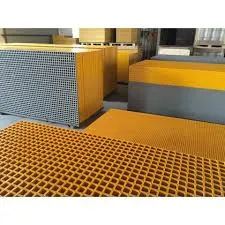
-
 Afrikaans
Afrikaans -
 Albanian
Albanian -
 Amharic
Amharic -
 Arabic
Arabic -
 Armenian
Armenian -
 Azerbaijani
Azerbaijani -
 Basque
Basque -
 Belarusian
Belarusian -
 Bengali
Bengali -
 Bosnian
Bosnian -
 Bulgarian
Bulgarian -
 Catalan
Catalan -
 Cebuano
Cebuano -
 China
China -
 China (Taiwan)
China (Taiwan) -
 Corsican
Corsican -
 Croatian
Croatian -
 Czech
Czech -
 Danish
Danish -
 Dutch
Dutch -
 English
English -
 Esperanto
Esperanto -
 Estonian
Estonian -
 Finnish
Finnish -
 French
French -
 Frisian
Frisian -
 Galician
Galician -
 Georgian
Georgian -
 German
German -
 Greek
Greek -
 Gujarati
Gujarati -
 Haitian Creole
Haitian Creole -
 hausa
hausa -
 hawaiian
hawaiian -
 Hebrew
Hebrew -
 Hindi
Hindi -
 Miao
Miao -
 Hungarian
Hungarian -
 Icelandic
Icelandic -
 igbo
igbo -
 Indonesian
Indonesian -
 irish
irish -
 Italian
Italian -
 Japanese
Japanese -
 Javanese
Javanese -
 Kannada
Kannada -
 kazakh
kazakh -
 Khmer
Khmer -
 Rwandese
Rwandese -
 Korean
Korean -
 Kurdish
Kurdish -
 Kyrgyz
Kyrgyz -
 Lao
Lao -
 Latin
Latin -
 Latvian
Latvian -
 Lithuanian
Lithuanian -
 Luxembourgish
Luxembourgish -
 Macedonian
Macedonian -
 Malgashi
Malgashi -
 Malay
Malay -
 Malayalam
Malayalam -
 Maltese
Maltese -
 Maori
Maori -
 Marathi
Marathi -
 Mongolian
Mongolian -
 Myanmar
Myanmar -
 Nepali
Nepali -
 Norwegian
Norwegian -
 Norwegian
Norwegian -
 Occitan
Occitan -
 Pashto
Pashto -
 Persian
Persian -
 Polish
Polish -
 Portuguese
Portuguese -
 Punjabi
Punjabi -
 Romanian
Romanian -
 Russian
Russian -
 Samoan
Samoan -
 Scottish Gaelic
Scottish Gaelic -
 Serbian
Serbian -
 Sesotho
Sesotho -
 Shona
Shona -
 Sindhi
Sindhi -
 Sinhala
Sinhala -
 Slovak
Slovak -
 Slovenian
Slovenian -
 Somali
Somali -
 Spanish
Spanish -
 Sundanese
Sundanese -
 Swahili
Swahili -
 Swedish
Swedish -
 Tagalog
Tagalog -
 Tajik
Tajik -
 Tamil
Tamil -
 Tatar
Tatar -
 Telugu
Telugu -
 Thai
Thai -
 Turkish
Turkish -
 Turkmen
Turkmen -
 Ukrainian
Ukrainian -
 Urdu
Urdu -
 Uighur
Uighur -
 Uzbek
Uzbek -
 Vietnamese
Vietnamese -
 Welsh
Welsh -
 Bantu
Bantu -
 Yiddish
Yiddish -
 Yoruba
Yoruba -
 Zulu
Zulu
tank fiberglass
The Rise of Fiberglass Tanks A Sustainable Solution for Water Storage
In recent years, the demand for efficient and sustainable water storage solutions has surged, leading to increased interest in fiberglass tanks. These structures, made from a combination of glass fibers and resin, provide several advantages over traditional materials like steel and concrete. This article explores the benefits of fiberglass tanks, their applications, and their potential to revolutionize water storage.
Durability and Longevity
One of the standout features of fiberglass tanks is their exceptional durability. Unlike metal tanks, which can corrode over time, fiberglass is resistant to rust and UV degradation. This characteristic ensures that fiberglass tanks can serve as reliable storage solutions for many years, often exceeding the lifespan of their metal or concrete counterparts. Additionally, the non-porous surface of fiberglass prevents the growth of algae and other microorganisms, maintaining water quality.
Lightweight and Easy to Install
Fiberglass tanks are significantly lighter than those made of steel or concrete. This lightweight nature makes transportation and installation much more manageable, particularly in remote or challenging locations. The ease of installation can result in reduced labor costs, making fiberglass tanks an economically attractive option for both residential and commercial water storage applications.
Versatility in Applications
tank fiberglass

Fiberglass tanks are incredibly versatile, suitable for various applications, including agriculture, industrial processes, and municipal water supply. In agriculture, for instance, they are used for rainwater harvesting and irrigation systems, promoting sustainable practices and reducing dependency on groundwater resources. Additionally, they serve as effective storage for wastewater treatment facilities, keeping effluent secure while awaiting processing. In industrial settings, fiberglass tanks can store chemicals, ensuring that hazardous materials are contained safely.
Environmental Impact
As the world grapples with the effects of climate change, the need for sustainable practices has never been more critical. Fiberglass tanks contribute to environmental sustainability in several ways. By utilizing materials that can be molded into various shapes and sizes, manufacturers can create efficient storage solutions that minimize resource use. Moreover, fiberglass can be produced using recycled materials, further reducing the carbon footprint associated with water storage.
Customization and Aesthetic Appeal
Another advantage of fiberglass tanks is the customization options available. They can be manufactured in various shapes, sizes, and colors to meet specific client needs. This flexibility allows users to create an aesthetically pleasing water storage solution that integrates seamlessly into its environment, whether that be a rural landscape or an urban setting. Customizable features can range from additional access ports to specialized coatings that enhance the tank's durability or insulation.
Conclusion
In summary, fiberglass tanks represent a modern, efficient, and sustainable solution for water storage challenges. Their durability, lightweight nature, versatility, and minimal environmental impact position them as ideal alternatives to traditional storage methods. As global water demand continues to rise and the impacts of climate change become more pronounced, embracing innovative solutions like fiberglass tanks will be crucial for ensuring a secure and sustainable future for water resources. As industries and municipalities increasingly recognize the value of fiberglass technology, we can expect to see widespread adoption and further innovations in this field, making it an exciting area to watch in the coming years.









